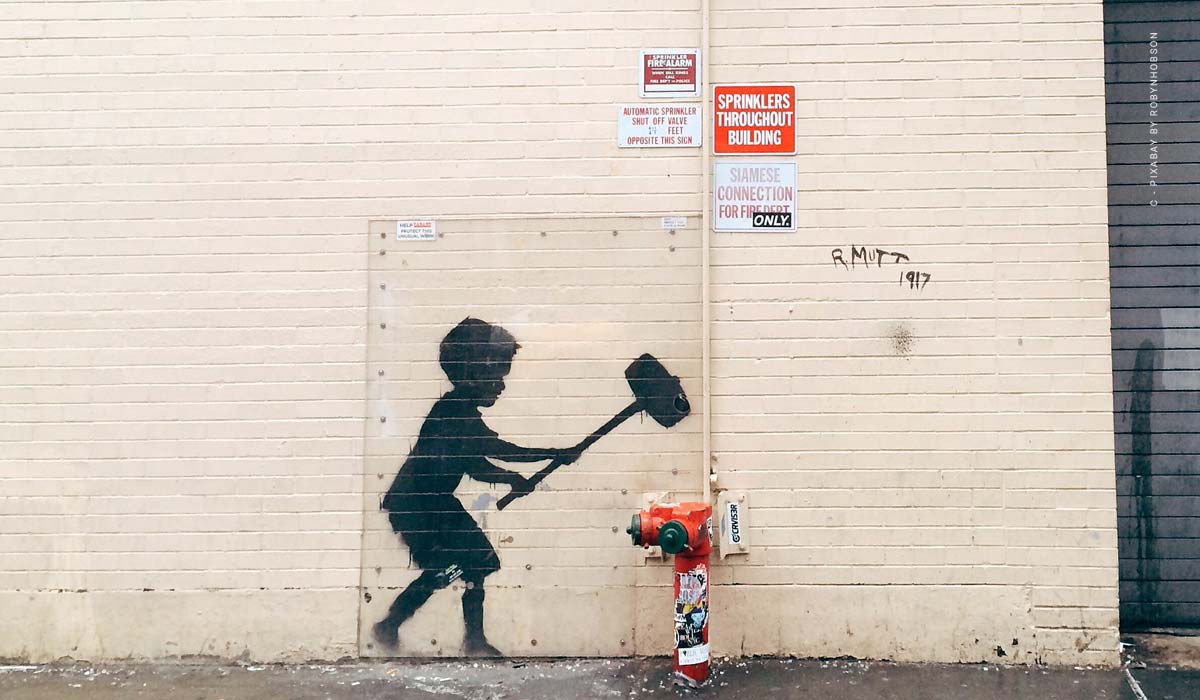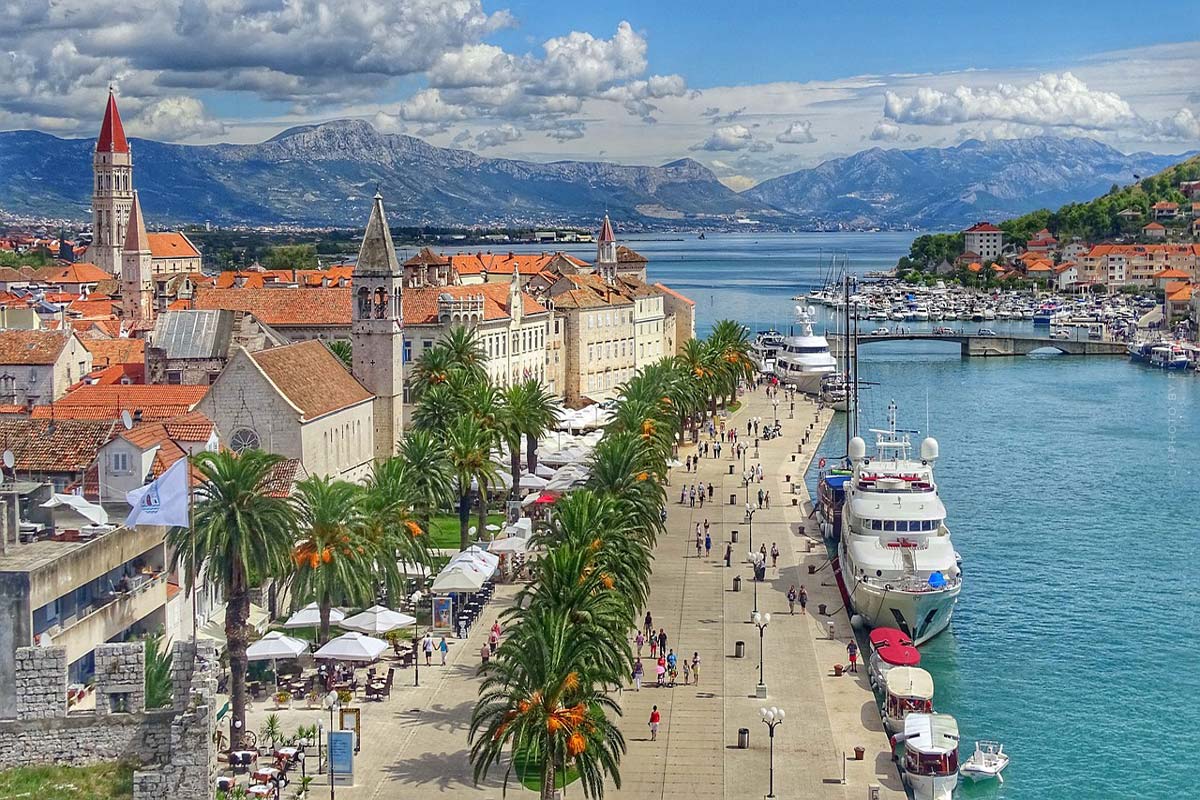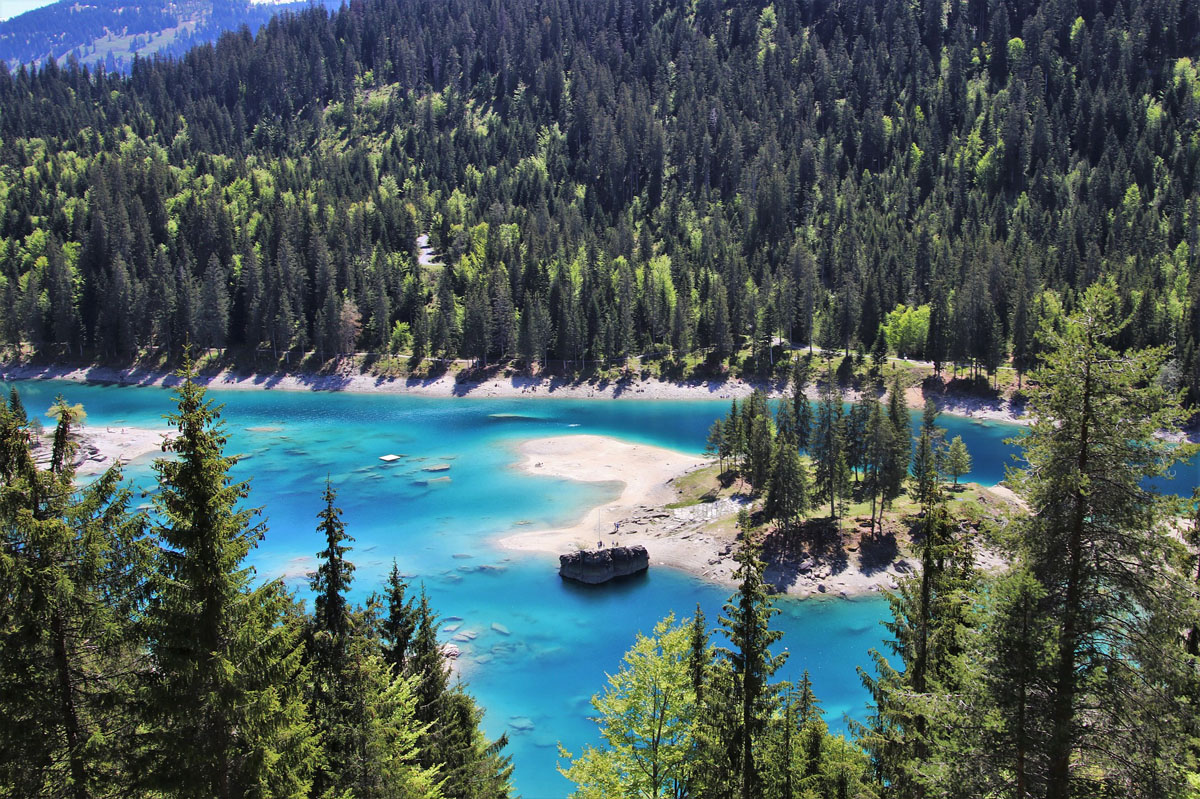Venice: holidays, travel, accommodation, favourite places and insider tips at a glance
Venice: the city of love, a masked ball or the image of the doves in St. Mark’s Square? Those who think of Venice often already have a preconceived image in mind. Sure Venice can be romantic and playful , but there is so much more to the Italian city. Did you already know that the “centro strorico”, that is the historical centre is located on more than 1oo islands in the lagoon of Venice? But how deep is the water in Venice anyway? And how could a city be built surrounded by water?
Find out here about the most exciting sights, important districts and one or two special features that give the city its unique flair.
Venice: Insiders of the lagoon city
Venice is located in the north of Italy in the Veneto region. Due to the infrastructure, there are hardly any roads on the more than 1oo small islands, but almost exclusively canals, such as the world-famous Grand Canal. The individual islands are connected by over 400 bridges.
Venice is located in the immediate vicinity of the Slovenian border, so a trip to the capital Ljubljana may be more convenient to reach than the nearby Italian fashion metropolis of Milan, depending on traffic conditions.
Are you curious? Then read on here and find out about the hottest Italian designs at Milan Fashion Week.
If you take a closer look at Venice, you will quickly see that the city is surrounded by water. Hundreds of years ago, all the islands did not exist, as the sea and the coastline were still closer together. But the ever-changing lagoon has long since ceased to be left to its own fate. Due to the influence of man, rivers have been diverted in large-scale measures. Houses, palaces and buildings whose facades seem to be one with the water line the city’s more than 150 canals.
Assuming that the water was clear and not so polluted, you should actually see the stilts and wooden piles that form the foundation of the buildings on the canal side.
Did you know that wood is practically infinitely durable as long as it is completely submerged in water, since microorganisms and industrial waste cannot harm the material in water? No wonder that Venice will probably be known as the “floating city” or the “city of a thousand bridges” forever.
Tip: find out more about holidays on Lake Garda here!
Vaporetto: The water bus as a means of transport
Cars, scooters and bicycles are forbidden in the lagoon city. The numerous small streets and alleys can only be passed on foot, which adds to the magic of the city. Far from the noise of motors, you feel like you’ve stepped back in time.
The traditional means of transport in Venice were gondolas, including gondoliers. Today, however, it is mainly tourists who use them to explore the city on guided tours through the canals. Locals mainly use motorboats. The only real means of public transport are the vaporetto boats, which can be seen as the equivalent of our domestic modes of transport such as bus and train. There are about 20 different lines connecting the main island with other islands and Venice with the mainland.
The most beautiful places, quarters & Co.
When you visit Venice, you should make a plan in advance of what you want to see. The city is not big, but due to the limited traffic and the many visitors, it can take a little longer to get from A to B. Venice is divided into six districts, which we will now briefly introduce to you below:
The six sestieri of Venice
Historic Venice is divided into the six districts of San Polo, Santa Corce, Cannaregio, Castello, San Marco and Dorsoduro, each with its own unique history. Cannaregio, for example, is one of the more authentic, dignified parts of the city, where visitors can get a glimpse into the lives of the locals. San Marco, on the other hand, is more lively and well-visited, with many popular tourist destinations located in this centrally-located district.
- San Polo
- Santa Corce
- Cannaregio
- Castello
- San Marco
- Dorsoduro with the island Giudecca
See for yourself and explore the Cannaregio district before your trip, for example, or find out more exciting information about some of the sestieri.
University district Dorsoduro
Dorsoduro: A district with a lively atmosphere and vibrant nightlife. In addition to numerous bars and restaurants, which one or the other Venetian likes to visit regularly, the Peggy Guggenheim Collection, for example, is also located in the quarter. The many shops, in combination with the clotheslines of the inhabitants, which are stretched criss-cross through the alleys, create a unique charm.
The island of Giudecca, which also belongs to the district, is considered a meeting place for young people. Here, too, there are numerous restaurants lined up along the promenades. South of the old town of Venice, it also has some buildings worth seeing, such as the church “Le Zitelle”.
San Marco: Basilica di San Marco & Co.
As Venice is a popular destination for many holidaymakers, it is worth exploring the famous sights in the morning and evening hours. During the peak tourist season, it is still warm at this time and the masses of day tourists from the surrounding Italian countryside have disappeared, so that the picturesque impressions of the city are ideal.
St. Mark’s Basilica on St. Mark’s Square is probably the most famous sight in Venice, including the Campanile di San Marco bell tower. The St. Mark’s Tower is almost 100 meters high and thus almost twice as high as the Leaning Tower of Pisa.
But also the Palazzo Ducale is a must. To avoid the long queue in front of the ticket office, you can also enter through a side entrance at the Museo Archelogico.
Castello
The luxury district of Castello is located in the northeastern part of the city and borders directly on St. Mark’s Square. The district’s “Giardini della Biennale” park will serve as the venue for the Architecture Biennale, which is taking place for the 17th time this year under the title “How will we live together? 3 national entries will grace the city from May 22 to November 21, in honor of Italian artist Lina Bo Bardi. The highlight of the exhibition marks a golden lion to honor her life’s work.
But also the Palazzo Ducale is a must. To avoid the long queue in front of the ticket office, you can also enter through a side entrance at the Museo Archelogico.
Want to see more of Italy? Here you can find more information about the beautiful city of Merano!
The Top 5 Venetian Islands
Although Venice itself has a lot to offer, it is worth exploring one or more of the surrounding Venetian islands for a day trip. Escape the hustle and bustle and enjoy some time away from the classic tourist attractions.
- Lido
- Torcello
- Murano
- Burano
- Lazzaretto Nuovo
Want to learn more about holidays in Italy? Then check out our travel guide to the sunny country.
Venetian features in fast forward
Of course, the entire city, the architecture and the Venetian way of life is a special experience, but certain spots of the city you simply must have seen. That’s why we have summarized them here for you.
Caffè Florian: Probably the most famous Venetian coffee house
Have you always wanted to try Venetian coffee? Then visit the Caffè Florian in Piazza San Marco and feel transported to an age when Goethe, Giacomo Casanova or Richard Wagner also enjoyed their coffee. Today the coffee house is a real tourist attraction, but due to its very special charm it is incomparable and should definitely be on your “to-do list”.
Carnival of Venice
The historic Venice Carnival is probably the city’s attraction, with its masks, animal fights or fireworks. Especially famous are the masks and costumes that cover part or half of the face. But besides the traditional masks, there are also other masks and disguises.
Visit one of the many boutiques and learn more about the popular and famous landmark of Venice. And who knows, maybe your loved ones back home will be happy about a little souvenir?
Venice as a film location
Not infrequently, the beautiful lagoon city serves as a film setting. For example, the main character of the novel “Lord of the Thieves” by the famous children’s book author Cornelia Funke finds himself on a magical carousel in Venice to finally be older. But also action-packed movies like the second Bond movie with Sean Connery or the drama “Honig im Kopf” with Til Schweiger have a reference to Venice. Both films demand towards the end the action in the Italian city and offer an impressive insight into the city.
So if you want to spend your holidays together as a family in Venice, it’s a good idea to accompany the journey with the right audio book to get in the mood for your holiday. If you want to make your stay particularly exciting, you can, for example, think up a tour in which you guide your children to several film locations such as the former theater “Stella” or the Basilica on the…
Exciting excursion ideas for young and old
Gondola ride on the Grand Canal
What could be more romantic than a gondola ride on the Grand Canal? Depending on your preference, there are private rides just for two, a gondola tour at night, or a shared tour with other onlookers. Either way, it’s worth exploring the waterway by boat and catching a glimpse of the palaces, churches and on the banks of the canal.
Tour of the Jewish quarter (ghetto)
The Jewish quarter of Venice is located in the Cannaregio district. In the past, there were strict rules here. For example, men had to wear a yellow cap when leaving the ghetto, women had to wear a yellow scarf and in the evening the gates to the quarter were firmly locked.
Today that has changed. Numerous tours lead through the quarter to explore the three synagogues and the Jewish quarter. Are you also curious what the quarter has to offer? See for yourself and get an idea of the ghetto in advance.
Plan your holiday now: tips & tricks
You are curious and can’t wait to travel to Venice yourself? Find out here about the best time to travel, how to get there from Germany and about possible accommodations.
When is the best time to travel?
The climate in Venice is temperate. Already in March the spring begins slowly. From April the temperatures rise and in May the thermometer already reaches an average temperature of 21 degrees Celsius. September, October and November are the best months to visit Venice, as the temperatures are bearable and you can still expect five to six hours of sunshine per day. In the autumn months, Venice exudes a very special charm, as there are often floods and high water.
Too warm temperatures, coupled with a high tourist rush in the height of summer can make your stay in the lagoon city miserable, as you probably won’t be able to enjoy your holiday to the full.
Inform yourself here about the current weather situation in Venice to be able to plan your upcoming vacation ideally:
This guarantees a successful journey
Getting to Venice is easier than you might think, because Venice even has an airport from where you can easily get to the city with the “AliLaguna boat” for around 15 euros. An alternative is the “ACTV Bus” which takes you to Piazzale Roma from where you can comfortably take a Vaparetto to the accommodation of your choice.
Travellers by train can reach the station “Santa Lucia”, which is also a Vaparetto station.
But also a journey by car is possible. If you come from Germany you have to consider that the passage through Austria and Italy is not free and you have to pay tolls. From Berlin, for example, you need about 12 hours to Venice. Of course, this can vary depending on travel time and traffic. When you arrive in Venice, you can park your car in Tronchetto and take a vaporetto from there. You will have to pay a fee of 21 euros per day. However, many hotels have a garage in which you can park as a guest at a reduced rate.
Luxury hotel, camping or would you prefer a holiday apartment?
Hotels are a dime a dozen in Venice, whether high-priced or a little cheaper, everyone will find something here. The five-star Hotel Luna Baglioni, for example, is located just a few steps from St. Mark’s Square and is the oldest hotel in Venice. It boasts feudal floral bouqets, suites and a terrace overlooking the canals. The boutique Hotel Novecent in San Marco is smaller, but definitely no less grandiose. The nine rooms are decorated in oriental style and the small courtyard makes for a wonderful breakfast in the fresh air.
Unlike hotels, holiday homes usually offer less comfort and luxury, as you have to take care of the daily cleaning of the room yourself, for example. Nevertheless, the equipment in a holiday home offers an immense added value, as you are more flexible in terms of time thanks to an ideally fully equipped kitchen and can, for example, have breakfast at home. An Airbnb also offers more privacy as you usually have a small kingdom just for you.
Find out in which part of the city you want to spend your holiday and book your hotel or Airbnb for yourself, your family or for a romantic holiday with your partner.
Real estate in Venice
Your heart beats for Venice and you want to spend your holidays there several times a year? Then think about whether it might be worthwhile to buy a plot of land in Venice and build your own house there. Maybe you already find a holiday home or apartment that suits you?
Click here to learn more about
real estate and its tax benefits.
Q&A: What should you know before traveling to Venice?
Feel like you still have some unanswered questions or want to find out if you’ve retained the information from the article? Take a quick test now and try to answer the following questions.
Can I arrive by car?
Yes, you can travel by car, but you have to park it outside the city in a garage, as the city is car-free. Alternative means of travel are by plane or train.
Which are the most beautiful places in Venice?
Venice has many beautiful places. End your evening with a glass of wine on the Grand Canal, visit the Giardini della Biennale park and admire the Biennale exhibits, or stroll through the Jewish quarter and soak up centuries of history.
When is the best time to travel?
The spring months of April and May as well as the autumn months of September, October and November are considered the best time to travel, as the climate is moderate during these months and the tourist rush is still or no longer as high.
What is Venice built on?
Venice, unlike many other Italian cities, was not built by the Romans. The foundations on which the walls of the palazzi and churches were built are mostly four parallel rows of walls perpendicular to the canal, built up to 80 centimetres deep into the ground Only the canal-side facades actually rest on tree trunks.











